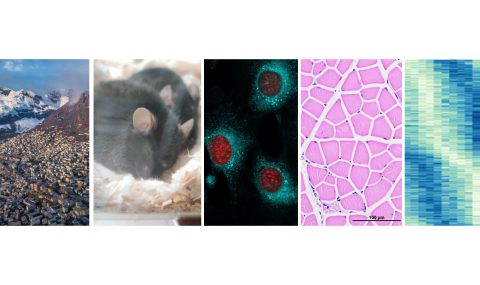Riboregulation of the circadian clock
We seek a highly motivated postdoctoral researcher to explore the regulatory interface between chronobiology and the RNA-based regulation of key elements of the mammalian clock in an exciting, interdisciplinary collaboration between the European Molecular Biology Laboratory (EMBL) in Heidelberg, Germany and the Weizmann Institute of Science in Rehovot, Israel, This project will combine RNA biology, systems biology, mechanistic studies and bioinformatics. The successful candidate will work at both EMBL and the Weizmann institute under the mentorship of Prof. Matthias Hentze (EMBL) and Prof. Gad Asher (Weizmann).
Please contact us as soon as possible, because suitable candidates are expected to apply for the competitive EMBL EIPOD-LinC fellowship by 18 January 2023.
(https://www.embl.org/about/info/postdoctoral-programme/eipod-linc-explor...)
MSc / Rotation students / PhD students / Post-doctoral fellows
The Asher lab is among the leading labs in the field of circadian clocks and metabolism. We work in a friendly and collaborative spirit. We are equipped with relevant experimental tools and genetic models to support the successful fulfillment of the projects. The lab is located at the Weizmann Institute of Science, one of the top research institutes in the world. High-end research facilities and services are available on campus. The Weizmann Institute attracts many students and postdocs from around the globe and has a very strong international community as a result. It is located minutes away from the vibrant life of Tel-Aviv.
Projects:
- Circadian exercise In the past 7 years, we studied the cross-talk between metabolism and circadian rhythms, leading us to venture into other fields, like exercise biology. Some exciting questions, both related to physiology and molecular mechanism, that stem from our recent publications (Adamovich et al., Proc. Natl. Acad. Sci. USA, 2021; Ezagouri et al., Cell Metabolism, 2019) are now under investigation. The relevant projects address the influence of circadian clocks on exercise performance, and training efficiency, as well as the effect of chronotype, feeding, and hypoxia on exercise capacity.
- Oxygen and Circadian Clocks We recently demonstrated that low-amplitude oxygen cycles, which mimic the daily physiological cycles in oxygen levels observed in rodents’ blood and tissues, can reset the clock in a HIF-1-dependent manner (Adamovich et al., Cell Metabolism 2017). Moreover, we showed that hypoxic conditions, as occur in sleep apnea, elicit circadian misalignment between clocks in different peripheral organs (Manella et al., Proc. Natl. Acad. Sci. USA, 2020). We continue our venture to study the cross-talk between oxygen and circadian clocks in many different aspects. Recently, we joined an expedition to the highest city in the world, La Rinconada, Peru, 5,300 meter above sea level to study circadian rhythms (see EXPEDITION 5300 WEBSITE). The relevant projects address the molecular and functional interactions between HIF-1 and the clock, under normoxia and hypoxia as well as the effects of high altitude on human circadian rhythms.
- Clocks resetting | Recently, we have developed a new method to study resetting agents in vitro in an efficient and high-throughput manner, dubbed Circa-SCOPE (Manella et al., Nature Communication 2021). This methodology opens the door to a wide range of applications, in both basic and translational research. For example, it allows screening multiple drugs (in-use or newly developed) in parallel to identify which affects the clock and how – with high relevance to chrono-medicine. It also allows the experimental testing of different models of clock resetting quantitatively.
If you decide to join us, you will lead an exciting project combining both experimental and computational biology in a cutting-edge and vibrant supporting scientific environment.
Contact information: Prof Gad Asher (gad.asher@weizmann.ac.il) or Dr. Yaarit Adamovich (yaarit.adamovich@weizmann.ac.il).


